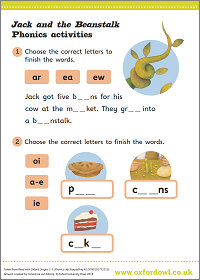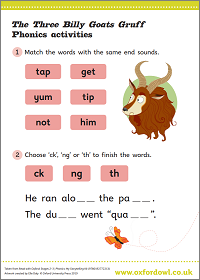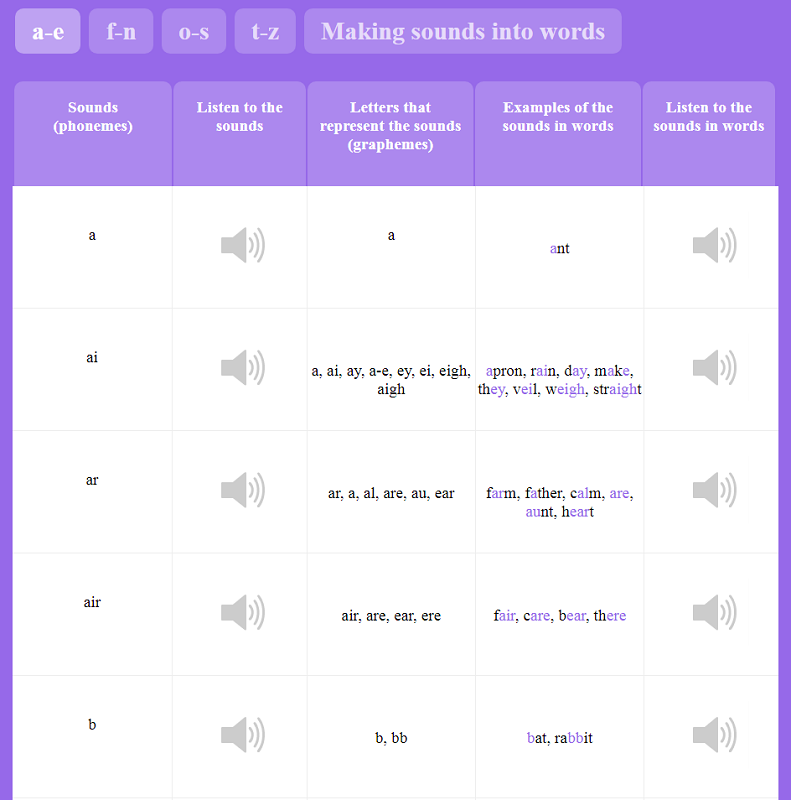EYFS
Welcome to the Early Years Foundation Stage (EYFS), which is how the Government and Early Years professionals describe the time in your child’s life between birth and age 5.
This is a very important stage as it helps your child get ready for school as well as preparing them for their future learning and successes. From when your child is born up until the age of 5, their early years’ experience should be happy, active, exciting, fun and secure; and support their development, care and learning needs.
Nurseries, pre-schools, reception classes and childminders registered to deliver the EYFS must follow a legal document called the Early Years Foundation Stage Framework.
How my child will be learning
The EYFS Framework explains what and how your child will be learning to support their healthy development.
Your child will be learning skills, acquiring new knowledge and demonstrating their understanding through 7 areas of learning and development.
Children should mostly develop the 3 prime areas first:
- Communication and language
- Physical development
- Personal, social and emotional development.
These prime areas are those most essential for your child’s healthy development and future learning.
As children grow, the prime areas will help them to develop skills in 4 specific areas:
- Literacy
- Mathematics
- Understanding the world
- Expressive arts and design.
These 7 areas are used to plan your child’s learning and activities. The professionals teaching and supporting your child will make sure that the activities are suited to your child’s unique needs. This is a little bit like a curriculum in primary and secondary schools, but it's suitable for very young children, and it's designed to be really flexible so that staff can follow your child's unique needs and interests.
All children will be assessed on entry and their progress will be monitored throughout the year and reported to you at regular intervals. Parental involvement is encouraged so that we can work in partnership to ensure progress
Children in the EYFS learn by playing and exploring, being active, and through creative and critical thinking which takes place both indoors and outside.
Getting ready to start school
Starting primary school can be daunting for you and your child, but it marks the start of an exciting new chapter. Before you know it, your child will be making friends, learning new skills, and becoming increasingly independent.
But how can you help them prepare for this big first step? Here are our five top tips.
1. Support your child’s independence
The most useful thing you can do to get your child ready for school is to make sure they are comfortable doing simple tasks by themselves. This includes:
- Going to the toilet. Resist the temptation to pop your child onto the loo and wipe their bottom. It is better to get your child into the habit of doing this for themselves.
- Getting dressed. Avoid clothing with fiddly buckles and buttons. It is also a good idea to have a few dry runs with the PE Kit!
- Putting on shoes. Tie-up shoes might be a bit difficult. Go for shoes with Velcro fasteners if possible.
- Eating. This includes using a knife and fork, opening their lunchbox, and being able to open everything in the lunchbox (some yoghurt tubes and drink cartons can be tricky).
- Solving simple problems. Encourage your child to resolve problems by talking when they don’t understand or something isn’t going well. It is important that they also learn when to ask an adult for help.
2. Build up your child’s social skills
Learning in a classroom is a social activity. Children learn and develop by playing alongside their peers, and they will make better progress if they are happy mixing with other children and adults. You can encourage this by:
- Organising play dates. Play dates with children from your child’s new class help improve their social skills and makes the leap to primary school less scary – they will like knowing one or two of their classmates before school begins. Virtual meet-ups can be useful too.
- Practising greetings. Your child should know how to start a conversation with their new classmates. You can use dolls and soft toys to practise saying “hello”!
- Practising conversations. Giving your child time to talk – and also having time when they have to listen – teaches vital speaking and listening skills. You could take turns to talk about the best part of your day during dinner. Can they ask questions to find out more? Can they remember their sibling’s favourite part of the day?
- Encouraging sharing and tolerance. Sharing games such as Snakes and Ladders let children practise social skills and turn-taking. Be sure to use the language of turn-taking, like ‘Whose turn is it next?’ and ‘Thank you for waiting’.
Video: Building kids’ resilience and confidence
How do you help build your child’s confidence and resilience? Teacher and child psychologist Jean Gross shares her tips for helping children believe in themselves.
3. Make a start on early literacy and numeracy skills
Your child is not expected to have amazing literacy or numeracy skills at this age – that’s what school is for! However, there are some ways you can get your child ready for learning:
- Help them recognise their name. It is handy if your child can find their space in the cloakroom, and can keep track of labelled clothes and other belongings.
- Share stories. Reading to your child improves their vocabulary and listening skills, and acting out stories is a great way to practise communication. Seeing you enjoy stories also primes your child to be an enthusiastic reader. You can find storytelling videos on our YouTube channel and free eBooks in our free eBook library.
- Hone fine motor skills. Building hand strength, fine motor skills, and hand-eye co-ordination helps prepare your child for writing. Making Lego models, using scissors, and threading beads onto string are fun ways to develop hand strength. Drawing and colouring activities introduce your child to mark-making tools.
- Introduce them to numbers. Why not go on a number hunt around your local area and take pictures of any numbers you find? You could also share counting songs together or count objects as you set the table for dinner. Can your child get five forks or three cups out? Can they share them between members of the family?
4. Help your child learn to concentrate
Being able to concentrate in 10–15 minute bursts will be really useful at school. Here are some ways to practise:
- Enjoy extended play together. Building kits like Lego are great for encouraging your child’s resilience, especially if they can finish the activity in one sitting. Race-the-clock games are good for improving concentration (and are helpful when you need your child to get their socks and shoes on quickly!).
- Follow instructions. Giving your child simple instructions to follow helps build their concentration. Why not have a go at some of these child-friendly recipes?
5. Talk to your child about school
Talking about the exciting things your child is going to do at school helps them get over any nerves. You could:
- Visit the school. Some schools have induction visits for children to meet their new teacher and spend time in the classroom. If they don’t, do ask to have a tour with your child. Walking or driving past the school at the end of the school day and watching children come out in uniform can also be very exciting!
- Talk about how fun school is! If you’ve been on a settling-in morning, there might be something your child particularly enjoyed playing with (the dinosaurs, the paints, the climbing frame). Older siblings could be enlisted to share all the things they enjoy about school – as long as they’re thoroughly briefed not to share things they’re not so keen on! Giving your child time to talk also lets them raise any concerns or questions.
- Practise the school routine. It can be helpful to do a practice journey before the big day, looking for interesting things on the way. It might be a good idea to make sure your child has school-friendly bedtimes and getting-up times a few days in advance.
Click on the picture below to access your child's online learning journal. If you need support or forgotten your log in details, please speak to your child's teacher.
Reading: Age 4–5 (Reception)
In Reception, your child will be taught phonics, a method of learning to read words. They learn to read letters by saying the sounds they represent. They can then start to read words by blending individual sounds together to make words.
Alongside learning to decode the words on the page, your child will also learn comprehension skills. This helps them to make sense of what the words say and what the text means. Together, these skills will help your child on their way to becoming a keen and confident reader.
Read on to find out how your child will learn to read at school and how you can help at home.
What your child will learn
Find out how your child will be learning to read in Reception (age 4–5):
Learning tricky words
How to help at home
There are lots of ways you can help your child with reading in Reception. Here are our top ideas.
1. Play rhyming games
Say ‘into the pot goes’ while pretending to place objects that rhyme into a pot (for example, a bat, a hat, a cat, a mat). Do this with your child and then see if they can do it independently.
You can turn this into a game by throwing in words that don’t rhyme, and asking your child to catch these ones out. For example, a cat, a hat, a bird – this last word shouldn’t go in the pot!
2. Play phonics word games
Play simple phonics word games based on the sounds your child is learning and has learned at school.
Start off using just the speech sounds and then immediately say the word. For example, you could say, ‘At the shop I will buy a /m/ /a/ /p/ – map, a /b/ /e/ /d/ – bed, a /d/ /u/ /ck/ – duck.’ Then, trying just saying the sounds and asking your child to work out and say the whole word.
Activity: Jack and the Beanstalk

Practise graphemes and phonemes.
Video: Billy Goats Gruff

Practise word endings.
3. Say the sounds right
In all games and activities, make sure you pronounce speech sounds clearly. Try to make them as short as possible – for example, the letter m has a short /m/ sound, not a continuous /mmmmmmm/ sound. Try not to add an extra sound onto the speech sound either (for example, the sound is /m/ and not /m-uh/).
4. Listen to your child read
In Reception, your child will probably start bringing home books to read. Try to find time to hear them read every day. It could be snuggled up on the sofa, at bedtime, or before school. Be sure to be patient and don’t forget to be impressed!
If your child gets stuck on a word, remind them to say the letter sounds individually and then blend them together quickly to hear the word. If your child still can’t work out the word, then tell them what it is and move on.
5. Read to your child
Learning to read can be hard work for many children, so it’s important to keep enjoying books together. Your child will also benefit from listening to books and stories that they can’t read themselves yet. This might include non-fiction books about things they are interested in or longer stories with more adventurous vocabulary.
Your child will bring home a book for you to read to them, this builds a love of story and reading that will give them the best start to their learning. These books are not intended to be able to be completely read by your child, they may however spot sounds or words they have been learning, while you follow the text with your finger as you read it.
Enjoy the time you share with them, as you read, it doesn't last forever; ask any parent of older children!
PHONICS
How do we teach phonics at Byron Court?
To teach phonics, we use a programme called Essential Letters and Sounds. This is created by The Knowledge Trust in association with Oxford University Press. This scheme has been validated by the Department of Education as meeting the criteria for a phonics scheme.
Essential Letters and Sounds is a focused teaching strategy that teaches children to learn to read letters and the sounds they represent. The English language is made up of 44 sounds, which we will be teaching your child. You will hear a video begin to play when you visit this page, this helps you understand how the phonemes are said and explains blending. Phonics is taught through 6 phases:
Phase 1: Children explore sounds and develop their listening skills.
Phase 2: The Letters and Sounds scheme is used to deliver a progressive programme of word reading skills. By the end of phase 2, many children should be able to read some VC (vowel- consonant) and CVC (consonant-vowel-consonant) words and to spell them. They start to learn to read and spell some high frequency ‘tricky’ words.
Phase 3 and 4: Letters and Sounds is used to deliver a progressive programme of word reading skills. Children begin to read and write one grapheme for each of the 44 phonemes (letters to represent sound in words – l – ea – fl). They blend and segment CVC (consonant-vowel-consonant), CCVC and CVCC words for reading and spelling and use their phonic knowledge when trying to read and write more complex words.
Phase 5 and 6: Letters and Sounds is used to deliver a progressive programme of word reading skills. Children are taught to read words automatically; decoding them quickly and silently because their sounding and blending routine is now established. Children are taught to read the 100 of the most frequently occurring words in English.
Phonics is taught as a discrete session every day in Reception, Year 1 and Year 2. Those children, who did not achieve the Phonics Check in Year 1, are given additional support through interventions in Year 2.
Phonics is still taught to those children in Key Stage 2 who do not have a secure phonic knowledge. The application of taught phonics skills runs throughout the whole curriculum.
How can you help your child become a reader for life?
- Read to them
- Listen to them read
- Tell them stories in your home language
- Take them to your local library
- Give them quiet time to read at home
- Turn the television off and talk about what they are reading
- Ask them questions
It is really important for you to read the phonically decodable books your teacher will send to you each week. These will practice the sounds, supporting your child to practice their phonics at home every day is vital. Teachers will send you the link to the online book after they have taught the sound in school.
Phonics Information and Support for you
Phonics, click here to find out what phonics is and how you can help at home.
CLICK HERE FOR THE AUDIO GUIDE: HOW TO SAY THE PHONIC SOUNDS





















